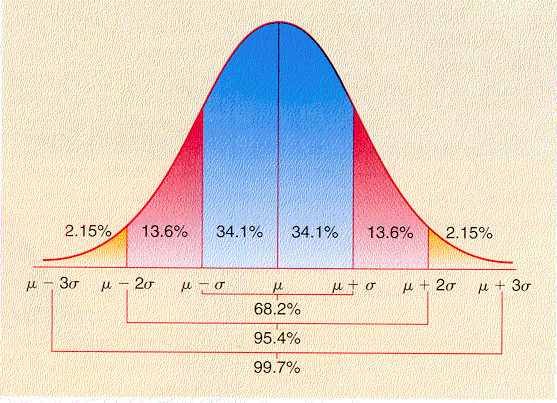 I support full-bore single-payer healthcare. The French model looks good to me, but the British or Canadian systems would be fine. But at my age (61) I'm beginning to doubt that I'll ever see that in superstitious, fearful, hateful America. So I want to ruminate randomly about what is known as the "public option" in the current (mid-2009) healthcare debate.
I support full-bore single-payer healthcare. The French model looks good to me, but the British or Canadian systems would be fine. But at my age (61) I'm beginning to doubt that I'll ever see that in superstitious, fearful, hateful America. So I want to ruminate randomly about what is known as the "public option" in the current (mid-2009) healthcare debate.
The so-called public option has been proposed for two reasons by Democratic policymakers. First and most importantly, it serves as a political wedge into the private healthcare system. It does this by providing a publically-funded, nonprofit alternative to private insurance plans. The idea here is that in the short run, it will competitively lower private insurance premiums by offering lower premiums in the public plan (what Obama characterizes as "keeping the insurance companies honest"); in the long run, though, the plan is designed to minimize the role of private insurance and leading the country to a single-payer system. This is very desirable to me, and I believe that were it to go forward, we would eventually plaud it on the left and on the right. However, it is very undesirable to conservative theorists, and it is because of that that the debate has become so fierce. An indicator of this is that protestors on the right rarely complain about the public option per se: they are more likely to complain about things like socialism in general or the Canadian or British "socialized medicine" systems in particular. This is because even though nothing like that is on the table now, both conservative and progressive propaganists understand full well the long-run purpose of the public option.
The second reason for a public option is to make good healthcare available to everyone regardless of their ability to pay. The idea here is that the public plan, being operated by the government, would subsidize the premiums of the poor by the payments of those who are better off, and if need be, by taxes on the wealthiest in the land. Protestors on the right do not say much about this, but as the fortunes of the public option wax and wane, this is what progressive activists focus on the most. For them, there is a clear and obvious need for healthcare for the millions of individuals and families who are not poor enough to qualify for Medicaid, but who cannot get healthcare coverage from their jobs and cannot afford individual coverage, possibly because their poor health puts them into very high premiums or even ineligibility for coverage at any price. And this is in fact the worst thing about American healthcare, that so many people who need it, simply do not have access to it.
However, the political and practical aspect of the public option are actually two very different things, that can be separated from each other rather easily. As much as it hurts me to say it, there are other, much less radical ways to resolve the lack of coverage issue than putting us on the path toward single-payer. I want to propose one of them here and to discuss it a bit.
In fact, America's existing healthcare system is a mixture of private and publically funded programs. There are five major federally-funded, single-payer healthcare systems, each serving millions of Americans. First is the system I was born into and had access to until I was an adult: the military healthcare system, now known as TriCare. Active-duty and retired servicemembers and their dependents have access to the full range of medical care at public expense, and have had this coverage at least since 1947, when I was born in the US Naval hospital in Quantico, Virginia. This was and by all accounts still is a great healthcare system for families with kids. The second system is the VA healthcare system, which is for those who have served in the military but who are no longer eligible for TriCare. This is also a first-rate system, but it has been the object of bean-counting and while this has resulted in a very efficient system in some ways, it has also reduced the number of former servicemembers who are eligible for treatment. The third federally-funded system is the healthcare plan for federal employees, which is basically similar to the employee healthcare plans of any large organization, but since it is for federal employees, it is paid for by the government. This plan, unlike TriCare and VA, consists of payments to private insurance companies: there are no federal hospitals or physicians (with some very minor exceptions such as clinics or physicians attached to specific federal bodies such as the US Congress and the White House). The fourth public healthcare system in the US is Medicare. This is part of the Social Security system and therefore is targeted at retirees, or those over age 65. There are some relatively minor exceptions such as disabled children or adults who under some circumstances qualify for Medicare. Medicare is similar in some respects to a very large insurance organization, in that it makes payments to physicians and hospitals according to a fixed schedule. It is theoretically funded by the SSI payments by employers and employees. Medicare tends to cover only the essential subset of what private plans cover, and there is a lucrative market in so-called MediGap private insurance intended to supplement Medicare coverage. The fifth existing publically funded healthcare system in the US is Medicaid. Medicaid is a joint state and federal plan that is aimed at the poor. It is similar in many ways to conventional private insurance, but the amount of coverage and the amount of reimbursement for physicians varies from state to state, and in recent years it has become a target for balancing state budgets (for example, MediCal, the California version of Medicaid, has recently made huge cuts in "optional" coverage such as dental, vision, and mental health). In order to qualify for Medicaid, there are severe means tests: it really is targeted at the very poor. However, once you qualify for it, there is a decent level of care in many cases.
The reason I went over the existing systems is to try to place the propose public option into perspective. As proposed in HR3200, the most fully-detailed current plan, the public option would essentially replace the existing Medicaid system, and modify the existing Medicare system. It would be available to all US citizens and legal residents as an option. The coverage would be at various levels, from the guaranteed minimum "basic" coverage, free to the very poor, up to what is known as "premium plus" coverage, which would be similar to Medicare+MediGap coverage. For those who could afford to pay their premiums, the plan would be self-supporting, but those who are unable to pay would be subsidized at the "basic" level. There are no plans for government physicians or hospitals under the public option. In terms of its similarity to private plans, it would be very similar to those who can afford a private plan, although it could be less expensive than some private plans, and there could be "premium plus" private plans that had more extensive coverage. Under HR3200, limits would be imposed on both public and private plans, including: (1) all applicants would be accepted regardless of any pre-existing condition; (2) there would be a limit--currently very debatable--on the ratio of the highest and lowest premiums for a certain level of coverage, for example, 3:1 or 7:1 (the lower the better for patients); (3) two levels of coverage (basic and medium) would be standardized across all public and private plans; (4) the amount of profit would be controlled in private plans; (5) the cost of treating specific conditions would be controlled geographically to a standard of medical consensus. All these controls and limits are necessary to prevent possible abuses by the private companies, such as for example refusing to cover the sickest people and forcing them into the public plan, keeping just the more profitable healthy people. There are other innovations in HR3200 that are also needed, such as the standardization of digital medical records that will hold down costs, allow much better tracking of costs at the national level, and also allow much easier and rapid transitioning between different healthcare systems and plans.
Here finally is my proposal. It seems to me that if limits and controls on private insurers such as those already in HR3200 are part of the reform legislation, then the public option is not really necessary in order to provide coverage to all. Instead, three changes would need to be made to the existing Medicaid program: (1) a change in means testing to permit coverage and/or subsidization not only of the poor, but of everyone who for any reason cannot afford private health insurance; (2) higher national standards on what must be covered by Medicaid in every state; and (3) higher rates of federal funding for Medicaid to alleviate the burden of states and to make the level of reimbursement to healthcare providers match that paid by private plans. This would be paid for by a small tax on private premium/premium-plus insurance plans (these are the highest "deluxe" plans enjoyed by a substantial minority of Americans). Additional revenues, if necessary, can come from restoring income tax brackets to the more equitable 1950s levels.
As I see it, the main disadvantage of this plan is that it will not provide pressure toward a national single-payer healthcare plan. Instead, it merely patches the existing system. However, it does so in several important ways: it provides coverage to all Americans, it will prevent the worst abuses by private insurers, it will reduce healthcare costs, and most importantly, since it has no new publically-funded plan, relying instead on a "fixed" Medicaid, it may actually have a chance of passing.


